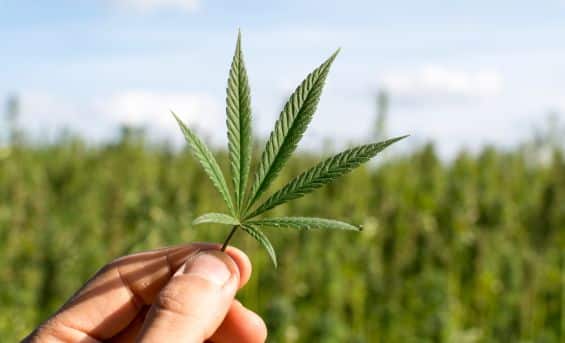Disclaimer: The information provided in this article is for informational purposes only and should not be considered legal or professional advice. It is important to consult with legal and industry professionals for guidance on specific cannabis cultivation practices and compliance with applicable laws and regulations in your jurisdiction.
Cannabis agriculture in the United States has experienced a remarkable transformation in recent years. With the evolving legal landscape surrounding cannabis, the cultivation of this versatile plant has emerged as a lucrative and rapidly expanding industry.
This article explores the state of cannabis agriculture in the USA, highlighting its economic impact, regulatory framework, cultivation methods, and the challenges and opportunities that lie ahead.
The Economic Impact of Cannabis Agriculture
The legalization of cannabis for both medicinal and recreational purposes has generated a significant economic impact in the United States. According to market research, the cannabis industry contributed billions of dollars to the US economy in recent years, creating job opportunities and attracting investments. Cannabis agriculture plays a crucial role in this economic growth, as it involves the cultivation, processing, and distribution of cannabis products.
The legalization of cannabis has allowed states to impose taxes on cannabis businesses, generating substantial revenue that can be allocated to various public programs and services. These tax revenues have the potential to fund education, infrastructure development, healthcare initiatives, public safety programs, and other critical areas of public interest.
For example, states like Colorado and California, which have well-established legal cannabis markets, have witnessed significant tax revenue growth. In Colorado, tax revenue from cannabis exceeded $1 billion since legalization, while California generated hundreds of millions of dollars in tax revenue in the early years of legalization.
Regulatory Framework
The regulatory framework for cannabis agriculture varies across states due to the patchwork of laws and regulations that exist in the USA. As of 2023, several states have legalized the cultivation of cannabis for both medicinal and recreational purposes, while others maintain strict regulations or prohibit it entirely. It is essential for cultivators to navigate and comply with the specific regulations in their respective states, including licensing requirements, quality control standards, security measures, and compliance with tax obligations.
In jurisdictions where cannabis cultivation is legal, cultivators must comply with specific licensing requirements established by regulatory bodies. These requirements typically involve submitting detailed applications, undergoing background checks, and meeting specific criteria related to facility design, security protocols, and operational procedures.
Quality control standards are vital to ensure consumer safety and product consistency. Licensed cannabis cultivators are often subject to stringent regulations and testing requirements to verify the potency, purity, and safety of their products. These standards may include testing for pesticides, heavy metals, microbial contaminants, and accurate labeling of cannabinoid content.
Security measures play a pivotal role in the cannabis industry due to its nature as a controlled substance. Cultivators are typically required to implement robust security systems to prevent unauthorized access, theft, diversion, and ensure compliance with legal requirements. Security measures may include surveillance systems, restricted access areas, inventory tracking systems, and comprehensive record-keeping to maintain transparency and accountability.
These licensing requirements, quality control standards, and security measures are in place to safeguard public health, prevent illegal activities, and promote a responsible and well-regulated cannabis industry. Adhering to these requirements demonstrates a commitment to compliance, consumer safety, and the overall integrity of the cannabis cultivation process. It also helps foster trust and confidence among consumers, regulatory authorities, and the broader community.
Cultivation Methods
Cannabis cultivation in the USA employs various methods, ranging from small-scale indoor operations to large outdoor farms. Indoor cultivation allows for precise environmental control, enabling year-round production and the ability to tailor growing conditions to specific strains. It typically involves the use of artificial lighting, climate control systems, and hydroponic or soil-based growing mediums.
Outdoor cultivation takes advantage of natural sunlight and relies on favorable climates, often resulting in larger yields. Additionally, greenhouse cultivation combines elements of both indoor and outdoor methods, offering a controlled environment with natural light.
For some, cultivating their own cannabis presents an alternative. This requires buying cannabis seeds from a licensed provider like Zamnesia and following specific cultivation guidelines. The art of cultivation goes beyond the practicalities of gardening. It’s a path that encourages mindfulness, patience, and respect for nature’s rhythms.
Cultivating cannabis at home not only allows individuals to grow strains tailored to their needs but also fosters a deeper connection with the plant and its therapeutic process. It’s a hands-on approach to wellness, offering a sense of empowerment and self-reliance that complements the physical benefits of cannabis.
Sustainable Practices and Environmental Considerations
As the cannabis industry expands, sustainable cultivation practices are gaining importance. Cultivators are increasingly adopting eco-friendly methods, such as energy-efficient lighting, water conservation techniques, organic cultivation, and the use of renewable energy sources. By implementing sustainable practices, the industry aims to minimize its ecological footprint and promote environmentally responsible cultivation.
One key area of focus is resource management. Cultivators can implement efficient irrigation systems, such as drip irrigation or water recirculation systems, to minimize water usage and reduce strain on local water sources. Additionally, employing energy-efficient lighting systems, such as LED lights, can significantly reduce energy consumption and lower carbon emissions.
Another aspect of sustainable practices involves waste management. Proper handling and disposal of plant waste, packaging materials, and other byproducts are essential to minimize environmental impact. Cultivators can explore options such as composting, recycling, or utilizing waste for biomass energy production to reduce waste sent to landfills.
Furthermore, environmentally friendly pest and disease control methods are gaining prominence. Integrated Pest Management (IPM) strategies prioritize the use of biological controls, organic pesticides, and cultural practices to manage pests while minimizing harm to beneficial organisms and reducing chemical inputs.
Consideration for environmental conservation extends beyond cultivation practices to include habitat preservation and biodiversity. Cultivators can implement measures to protect nearby ecosystems, such as maintaining buffer zones and employing regenerative farming techniques that promote soil health and biodiversity.
Engaging in sustainable practices not only helps mitigate environmental impacts but can also benefit the cultivator economically. By reducing resource consumption and operational costs, cultivators can improve their bottom line while demonstrating a commitment to environmental stewardship.
Challenges and Opportunities
Despite the growing acceptance and legalization of cannabis, the industry still faces challenges. Federal regulations, including banking restrictions and taxation issues, pose hurdles for cannabis cultivators. Additionally, compliance with ever-changing state regulations and market demands requires adaptability and ongoing education.
However, the expanding market and consumer demand present significant opportunities for cultivators. The increasing acceptance of cannabis for medicinal and recreational use, coupled with the potential for exportation to countries with legalized markets, opens doors for growth and profitability. Innovation in cultivation techniques, genetics, and product development further fuels the industry’s potential.
Conclusion
Cannabis agriculture in the USA has emerged as a thriving industry with a substantial economic impact. As more states legalize cannabis, cultivators face the challenges of navigating complex regulations and meeting market demands. Sustainable practices and innovation play crucial roles in shaping the future of cannabis agriculture. As the industry continues to evolve, cultivators who stay abreast of regulatory changes, embrace sustainable methods, and strive for excellence in cultivation are poised to thrive in this ever-expanding market.
Disclaimer
The information provided in this article is for informational purposes only and should not be considered legal or professional advice. It is important to consult with legal and industry professionals for guidance on specific cannabis cultivation practices and compliance with applicable laws and regulations in your jurisdiction.




